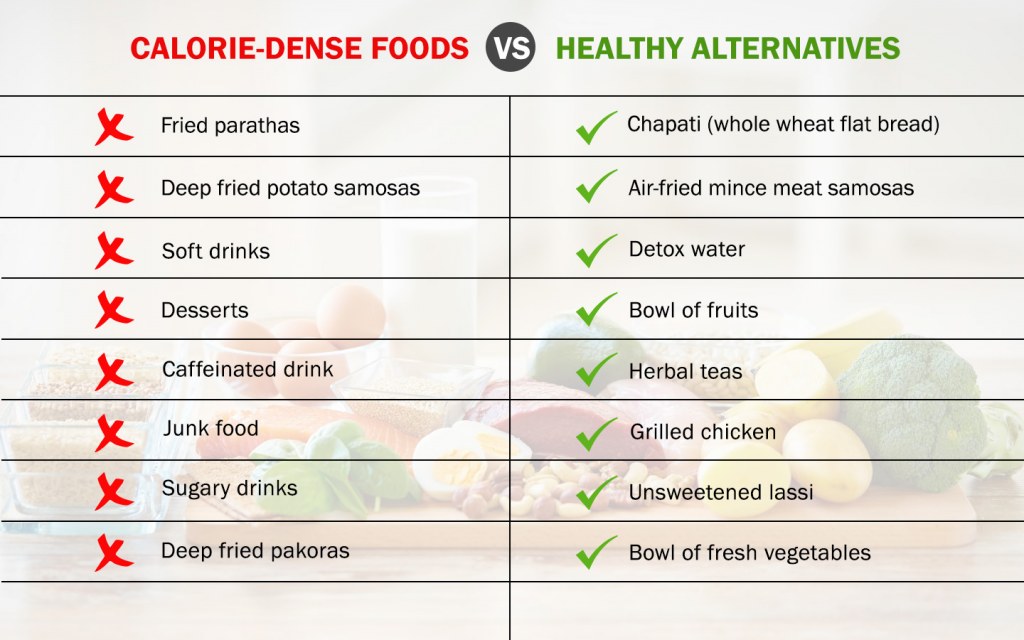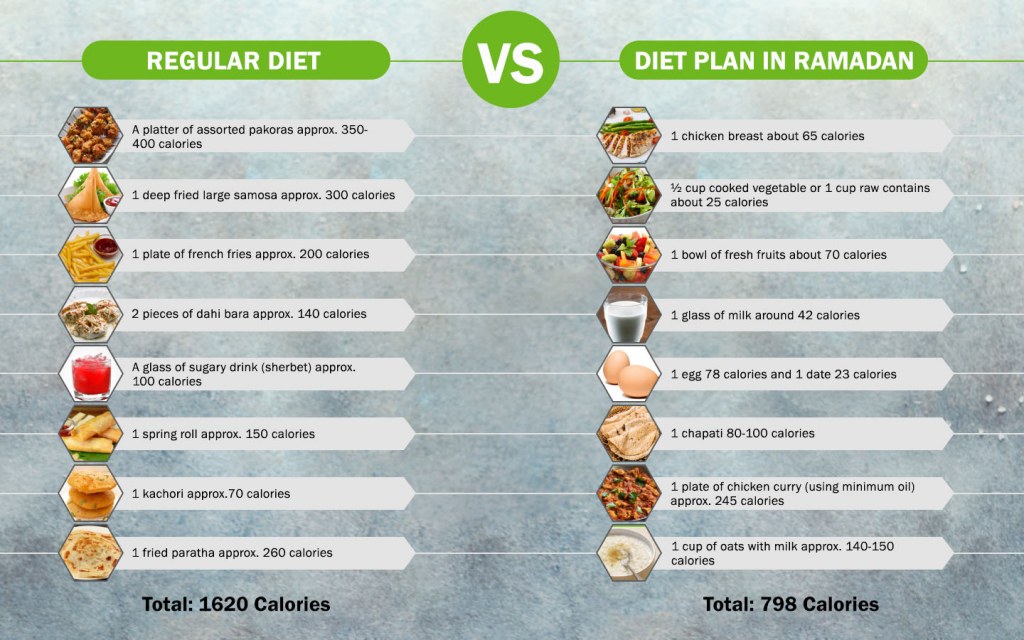Ramadan is a holy month for Muslims during which they fast for 30 consecutive days. It is that time of the year the body is deprived of food and water for almost a day in order to feed the soul the noble traits of patience and gratitude. However, as the month approaches, we find quite the contrary happening all around us.
Instead of starving the body and feeding the soul, we do the total opposite: feed (read: over feed) the body and starve the soul. The results are also quite the opposite, then. Rather than gaining the benefits of fasting, we end up battling health issues. If you eat healthy during this month, you will not only attain physical wellness, but also be able to lose weight in Ramadan. In this blog, we’ll share a quick weight loss strategy with you that you can adopt this Ramadan.
Find healthy alternatives
If you are looking to shed a couple of pounds in Ramadan, then you must learn how to replace calorie-dense foods with nutrient-rich, healthy alternatives. You must be prepared to make some major changes to your lifestyle.

How to eat healthy
Once you are ready to switch to healthier alternatives, the next step is perseverance. It’s easier said than done. If you want to make it easier for yourself to follow this diet plan in Ramadan, prepare your meals beforehand, especially if you are working from home owing to the present COVID-19 pandemic in the country. You can cook your food in batches and store it in boxes. This will also deter you from buying ready-made food. You will have your own carefully planned and portioned meals, ready to eat, at the time of Iftar.

If you cook your protein in batches, it will not only save your time but also save you from binge eating. You can store roasted chicken breasts in your freezer. Another good idea is a colourful veggie salad with julienne-cut capsicum, cabbage, cucumber and tomato; a dash of extra virgin olive oil and small cubes of cottage cheese is a good way to provide your body with more nutrients and less calories.
Work out in Ramadan
Just like praying in Ramadan lifts you spiritually, fasting helps detoxify your body – if you eat the right way. To achieve your fitness goals in Ramadan, don’t drop out from your exercise regime, even if you can’t go to the gym because of the COVID-19 situation in the country. Instead, regular work-out sessions could help you stay active. Weight training three times a week can help maintain muscle strength.
You do not need to be too hard on yourself, though. A 45-minute workout in Ramadan is good for your weight loss journey. The best time to exercise early in the morning. Or you can exercise an hour after Iftar, when your body has re-stocked and can bear the intensity of the workout sessions. Get down to standard push ups, burpees, squats, planks and a 15-minute yoga. You can add cardio exercises too, which will help burn fat faster. Take your pick among the two types of cardio exercises: high- intensity interval training (HIIT) or low-intensity steady state (LISS).

HIIT is a fast way to lose weight in Ramadan. It includes 20-second sprints of intense workout followed by a 40-second rest. LISS is a low intensity work out like going for a swim, taking a walk or riding a bicycle. The main benefit of LISS is that it doesn’t put your body in stress, rather helps you to maintain your fitness levels.
Take your pick
When offered a platter full of fried pakoray or a bowl full of fresh fruit salad, you can choose the option with less calories. Go for nutrient rich foods instead of the regular fried options. In the same way, if you have to pick between a platter of fried samosay and a bowl of chholay (chickpeas), go for chholay. Similarly, if there is a soft drink or lassi on the menu, you should drink a glass of lassi.

For dinner, you can have a steak with stir fried vegetables instead of skipping on dinner because if you skip dinner, you will feel less energetic during fasting hours.
Keep yourself hydrated
The more you drink water, the less hungry you will feel. It is recommended to drink eight glasses of water at least during the day. You can add cucumber and yogurt in your diet so that you don’t feel thirsty during fasting hours.

Detox water recipes are also a good way to replenish thirst during the holy month. Take a jug of water, add lemon wedges, ginger, cucumber and fresh mint leaves. Leave it for five to six hours and then drink it at Iftar – you will see miraculous results. It helps in losing belly fat.
Watch out your calorie intake during Suhoor and Iftar
Keep a close eye on what you are consuming at Sehri and Iftar time. Are you consuming more calories? Here is a list of items with their calories:

It is important to eat healthy in Ramadan as it helps you to stay active. Also, a common complaint that people make during Ramadan is that they feel tired and don’t know how to overcome fasting fatigue in Ramadan. Eat healthy during the fasting month by consuming easy to digest foods in order to stay healthy and active the entire month. Remember, the key to a quick weight loss strategy in Ramadan is persistence. However, it’s better if it continues after the holy month ends as maintaining your health shouldn’t be a short-term goal.



